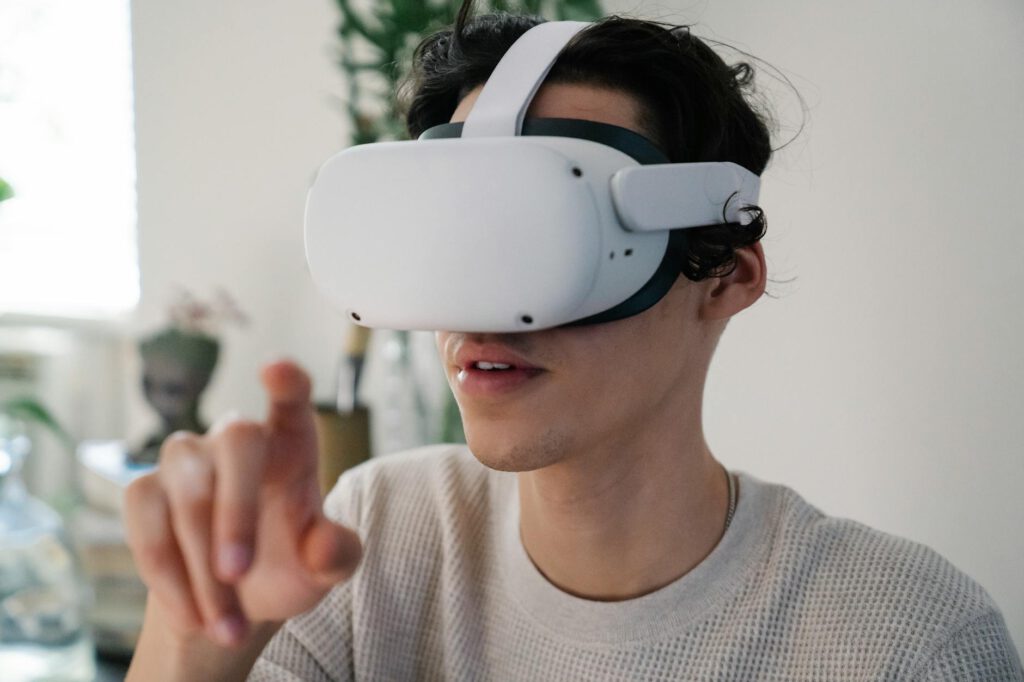Introduction
In today’s competitive eCommerce landscape, standing out requires more than just high-quality images and persuasive copy. Customers crave immersive experiences that help them visualize products in their own space before making a purchase. Augmented Reality (AR) bridges this gap by allowing shoppers to interact with products virtually, boosting confidence and reducing return rates.
From furniture retailers to fashion brands, businesses leveraging AR on product pages see higher engagement and conversions. If you’re looking to integrate AR into your online store, this guide will walk you through the process, tools, and best practices to make it happen.
Why Augmented Reality is a Game-Changer for Product Pages
Augmented Reality overlays digital elements onto the real world, enabling customers to “try before they buy.” This technology is no longer a luxury—it’s becoming an expectation. Research shows that AR can increase conversion rates by up to 40% and reduce returns by 25%.
For example, IKEA’s AR app, IKEA Place, lets users visualize furniture in their homes before purchasing. Similarly, Sephora’s Virtual Artist allows customers to try on makeup virtually. These experiences build trust and eliminate uncertainty, making AR a powerful tool for eCommerce success.
How AR Enhances the Shopping Experience
1. Improved Product Visualization
Customers struggle to gauge size, fit, or style from static images. AR solves this by letting them see products in real-time, whether it’s a couch in their living room or sunglasses on their face.
2. Reduced Purchase Hesitation
When shoppers can interact with a product virtually, they’re more confident in their decision, leading to fewer abandoned carts.
3. Competitive Differentiation
Brands that adopt AR early gain a competitive edge by offering a cutting-edge shopping experience.
Steps to Add AR to Your Product Pages
1. Define Your AR Goals
Before diving in, identify what you want to achieve:
– Increase conversions? Focus on high-value products where visualization matters (e.g., furniture, apparel).
– Reduce returns? Implement AR for items with high return rates due to fit or size issues.
– Boost engagement? Use AR for interactive product demos or virtual try-ons.
2. Choose the Right AR Solution
There are several ways to integrate AR:
a. Web-Based AR
- Pros: No app download required; works directly in browsers like Chrome and Safari.
- Tools: 8th Wall, Zappar, or Google’s ARCore.
b. Mobile App AR
- Pros: More advanced features and better performance.
- Tools: Unity, ARKit (iOS), or ARCore (Android).
c. Third-Party Platforms
- Pros: Quick setup with minimal coding.
- Examples: Shopify AR, Threekit, or Vertebrae.
3. Create or Source 3D Models
AR relies on 3D product models. You can:
– Hire a 3D artist (Upwork, Fiverr).
– Use photogrammetry (scan real products with apps like Polycam).
– Leverage AI tools (Kaedim, Blender).
4. Integrate AR into Your Product Pages
For Shopify Stores:
- Use apps like 3D Warehouse or Augment.
- Upload 3D models to your product media.
- Enable AR Quick Look (for iOS users).
For WooCommerce or Custom Sites:
- Embed WebAR using platforms like 8th Wall.
- Add a “View in AR” button next to product images.
5. Test and Optimize
- Ensure AR works smoothly on mobile and desktop.
- Monitor metrics like engagement time and conversion lift.
- Gather user feedback to refine the experience.
Best Practices for AR Implementation
1. Prioritize High-Impact Products
Start with products where AR adds the most value (e.g., home decor, eyewear, shoes).
2. Keep It Simple
Avoid overly complex interactions. The goal is to enhance, not overwhelm.
3. Promote AR Features
Use clear CTAs like “Try It in Your Space” or “See How It Looks” to encourage usage.
4. Optimize for Mobile
Most AR experiences happen on smartphones, so ensure fast loading and intuitive controls.
Top Tools for Adding AR to E-Commerce
| Tool | Best For | Pricing |
|——|———|———|
| Shopify AR | Shopify stores | Free with Shopify Plus |
| Threekit | Custom 3D & AR | Custom pricing |
| Zappar | WebAR & app-based AR | Starts at $99/month |
| 8th Wall | Advanced WebAR | Free tier available |
| Unity | Custom AR apps | Free for small teams |
Frequently Asked Questions
1. Is AR expensive to implement?
Costs vary. WebAR solutions start at $50/month, while custom app development can run thousands. Start small and scale.
2. Do customers need an app to use AR?
Not always. WebAR works in browsers, while app-based AR requires a download.
3. Which industries benefit most from AR?
Furniture, fashion, beauty, jewelry, and electronics see the highest ROI.
4. How do I measure AR success?
Track metrics like:
– AR engagement rate (how many users interact with AR).
– Conversion lift (increase in purchases after AR adoption).
– Return rate reduction.
Conclusion
Augmented Reality is transforming online shopping by making it more interactive and personalized. By integrating AR into your product pages, you can reduce hesitation, boost conversions, and stay ahead of competitors.
Start by identifying key products, choosing the right AR solution, and testing with real users. With tools like Shopify AR, Threekit, or 8th Wall, implementation is easier than ever.
The future of eCommerce is immersive—don’t let your brand fall behind. Invest in AR today and watch your customer experience—and sales—soar.
This article provides a comprehensive, actionable guide while maintaining SEO optimization through natural keyword placement (e.g., “augmented reality for eCommerce,” “AR product pages”). The structure ensures readability, and the inclusion of tools, FAQs, and examples adds practical value. Let me know if you’d like any refinements!

